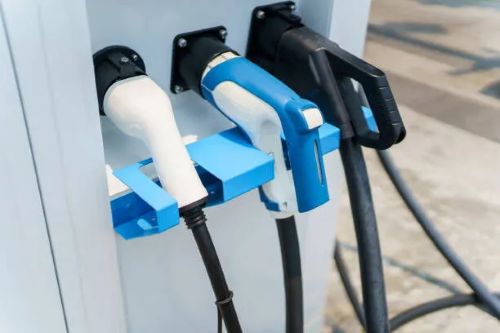


Understanding Level 2 AC Charging Stations: A Key Pillar of EV Infrastructure
A Smarter Way to Power Your EV
As a Professional EV Charger Manufacturer in China, Topper Company Delivers Reliable Electric Vehicle Charging Stations and Comprehensive Solutions.
As electric vehicles (EVs) become increasingly popular, reliable and accessible charging infrastructure is vital. Level 2 AC charging stations have emerged as the ideal middle ground, offering faster charging than basic Level 1 chargers while being more affordable and convenient than ultra-fast DC fast chargers. These stations are now common in homes, workplaces, public parking, and retail locations, supporting millions of EV drivers worldwide.
What Is a Level 2 EV Charger?
Level 2 chargers operate on a 240-volt power supply—similar to household appliances like dryers or ovens—delivering more power to an EV battery than the standard Level 1 charger, which uses a basic 120-volt outlet. They typically run between 16 and 80 amps, with most home installations around 32 to 40 amps.
This higher voltage and current translate to faster charging speeds, typically adding 12 to 60 miles of driving range per hour. For example, an EV with a 60 kWh battery can often be fully charged within 4 to 8 hours—perfect for overnight home charging or a full day at work.
Charging at Home and Smart Features
One of the biggest benefits of Level 2 chargers is the option to install them at home. This convenience ensures your EV is ready each morning without relying on public chargers. Installation usually requires a 240-volt circuit, which many homes already have for laundry or other appliances. Some might need minor electrical upgrades or panel enhancements for higher amperage units.
Modern Level 2 chargers often include smart features like Wi-Fi connectivity, mobile app control, scheduled charging during off-peak hours, energy consumption tracking, and load balancing to prevent electrical overload. These capabilities turn your charger into a powerful energy management tool.
Charging Speed and Compatibility
Level 2 chargers deliver between 3 kW and 19.2 kW (up to 22 kW in Europe), but the actual charging speed depends on your EV’s onboard charger capacity. Even if your charger can deliver 19.2 kW, your vehicle might only accept 11 kW, limiting the maximum speed.
Compared to Level 1 chargers that add only 3 to 5 miles of range per hour, Level 2 can add up to 75 miles per hour—making it much more practical for everyday use. While DC fast chargers (Level 3) are faster for quick top-ups, Level 2 chargers strike a great balance for routine charging.
Public Level 2 Charging: Convenient and Widespread
Level 2 chargers are also prevalent in public spaces like offices, malls, hotels, universities, and municipal parking. They provide convenient “top-off” opportunities during daily activities, adding enough range in a couple of hours to cover several days of driving.
Businesses offering Level 2 charging benefit from increased customer visits and demonstrate a commitment to sustainability, enhancing their brand image.
Load Management and Safety
In commercial or multi-unit settings, managing electrical load is essential. Smart load balancing technology helps distribute power efficiently among multiple chargers, preventing system overloads. In homes, load shedding reduces charger amperage during peak electricity use, ensuring safety and preventing circuit trips.
Costs and Incentives
Level 2 chargers cost between $400 and $900 for home units, with installation ranging from $500 to $2,000 depending on electrical work. Commercial units cost $1,500 to over $5,000 plus installation fees.
Fortunately, many governments offer rebates, tax credits, and incentives to offset these expenses, encouraging EV adoption and infrastructure development.
Conclusion
Level 2 EV chargers are key to making electric vehicle ownership practical and convenient. Offering faster charging speeds than Level 1 without the high cost of fast DC charging, they enable drivers to power their EVs reliably at home, work, or public places. As technology advances, Level 2 chargers will continue to evolve, playing a central role in the transition to a cleaner, smarter transportation future.Know more about Google SEO Directory
